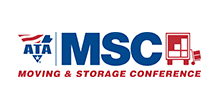
Illinois Moving Guide 2025

Moving to Illinois in 2025 requires careful planning and an understanding of local laws, moving procedures, and other critical aspects of relocation. Whether you’re moving to Chicago, Springfield, or a rural area, being well-prepared for the process is important. This guide covers key information you need to know to make your move to Illinois seamless and stress-free.
1. Pre-Move Preparation
Before packing your bags, there are several steps to consider to ensure a smooth transition:
a. Plan Your Move in Advance
- Set a timeline: Start planning at least 6-8 weeks before the move. This will give you enough time to organize everything, hire movers, or rent moving trucks.
- Budget your move: Determine the costs of hiring a moving company or renting a truck. You’ll also need to budget for any deposits, moving supplies, and additional fees.
- Create a checklist: List all the tasks to be done before the move, such as changing your address, updating insurance policies, and disconnecting utilities.
b. Research the Illinois Area
- Learn about the city/town: Research your new neighborhood in Illinois, especially if you’re unfamiliar with the area. This includes school districts, healthcare facilities, public transportation, and local amenities.
- Cost of living: Illinois is diverse in terms of living costs. Chicago tends to be more expensive, while other parts of the state may offer more affordable living.
c. Hiring a Moving Company
- Do thorough research: Ensure you hire a licensed, insured, and reputable moving company. Read reviews, get recommendations, and verify the company’s credentials.
- Get multiple quotes: Ask for estimates from at least three moving companies. Prices may vary based on distance, number of belongings, and time of year.
d. Declutter
- Moving presents an excellent opportunity to get rid of things you no longer need. Donate, sell, or recycle unwanted items before the move to reduce the number of items you need to transport.
2. Packing and Organizing
Packing can be one of the most overwhelming aspects of moving. Here’s how to make it easier:
a. Pack Early
- Start packing at least 2-3 weeks before your move date. Begin with non-essential items such as seasonal clothing, decorations, and extra kitchenware.
b. Use Proper Packing Materials
- Invest in sturdy boxes, bubble wrap, packing peanuts, and packing tape. This ensures that your items are well-protected during transit.
c. Label Boxes Clearly
- Label every box with its contents and the room it belongs in. This will make unpacking much easier when you arrive at your new home.
d. Pack an Essentials Box
- Pack a separate box with items you’ll need right away—such as toiletries, important documents, chargers, a change of clothes, and basic kitchen items.
3. Moving Day Tips
The actual day of the move can be hectic, but with proper preparation, it can go smoothly.
a. Be Ready for the Movers
- Ensure your home is packed up and ready to go by the time the movers arrive. Have a plan for supervising them if needed, and make sure to ask questions about their process.
b. Keep Important Documents Handy
- Keep personal documents (e.g., birth certificates, passports, medical records) in a safe and easily accessible place.
c. Take Inventory
- Inspect your belongings before the movers take off. Both you and the moving company need to have a record of what’s being transported.
d. Check Weather and Traffic
- Illinois weather can be unpredictable, especially during the winter months. Check the forecast and be prepared for delays due to snow, rain, or roadwork.

4. Arrival in Illinois
Once you arrive in Illinois, you’ll need to take care of several important tasks to get settled:
a. Update Your Address
- Change your address with the USPS: This can be done online or at your local post office.
- Notify banks, utilities, and other institutions: Ensure that your new address is updated with your bank, credit card companies, and other service providers.
b. Register Your Vehicle
- If you’re bringing a car, you’ll need to register it with the Illinois Secretary of State’s office. You can do this online or in person at a local facility.
- Driver’s License: If you’re moving to Illinois from another state, you must obtain an Illinois driver’s license within 90 days of becoming a resident. Visit the Illinois Department of Motor Vehicles (DMV) for more information.
c. Healthcare and Insurance
- Transfer healthcare providers: If you’re moving to Illinois from another state, it’s a good idea to find new healthcare providers in your area.
- Health Insurance: If you are moving for a job, check with your employer about your health insurance coverage, and ensure its updated with your new address.
d. Utilities and Services
- Set up utility accounts: Make sure to set up utilities (gas, water, electricity, internet) ahead of time, so they are ready for you when you arrive.
- Local service providers: Research local services like garbage collection, cable TV, internet, and other household services.
5. Living in Illinois
Understanding life in Illinois is key to adjusting to your new environment.
a. Cost of Living
- The cost of living in Illinois varies. Cities like Chicago can be expensive, with high housing costs, transportation fees, and general living expenses. On the other hand, rural areas may offer lower housing prices and a slower pace of life.
b. Weather
- Winter: Illinois winters can be cold and snowy, particularly in the northern parts. Be prepared for snow removal and potentially hazardous driving conditions.
- Summer: Summers can be hot and humid, especially in the central and southern parts of the state.
c. Transportation
- Chicago Transit Authority (CTA): If you are living in Chicago, the CTA provides buses and trains that serve the metropolitan area.
- Other areas: For rural areas or suburban living, driving may be necessary as public transportation options are limited.
d. Education
- Illinois has a wide range of public and private schools, as well as higher education institutions. Check with local school districts for enrollment information, or research universities like the University of Illinois, Northwestern University, or DePaul University if you plan to pursue higher education.
e. Taxes in Illinois
Illinois has a flat state income tax rate. In 2025, this rate is 4.95%. Additionally:
- Sales Tax: Illinois has a statewide sales tax rate of 6.25%, but local taxes can raise this rate.
- Property Tax: Illinois is known for relatively high property taxes, especially in Cook County (which includes Chicago). Be prepared for this additional expense.
By preparing early, hiring the right moving company, and understanding the essentials of Illinois life, like taxes, transportation, and education, you can ensure a smoother transition to your new home.
Moving Services Inc. – Expert Moving Services Across Illinois:
Moving Services Inc. is a trusted moving company offering comprehensive and professional moving services throughout Illinois. Whether you’re moving locally or long-distance, our experienced team ensures a smooth and stress-free experience from start to finish.
We specialize in residential, commercial, and office moves, providing expert packing, loading, and unloading to guarantee the safe transport of your belongings. Additionally, Moving Services Inc. offers value-added services such as temporary storage, furniture disassembly and reassembly, and the handling of fragile or high-value items. With a customer-first approach, we are committed to delivering timely, efficient, and affordable moving solutions tailored to each client’s specific needs, making us a reliable partner for any move in Illinois. Contact us today to see what we can do for you!






